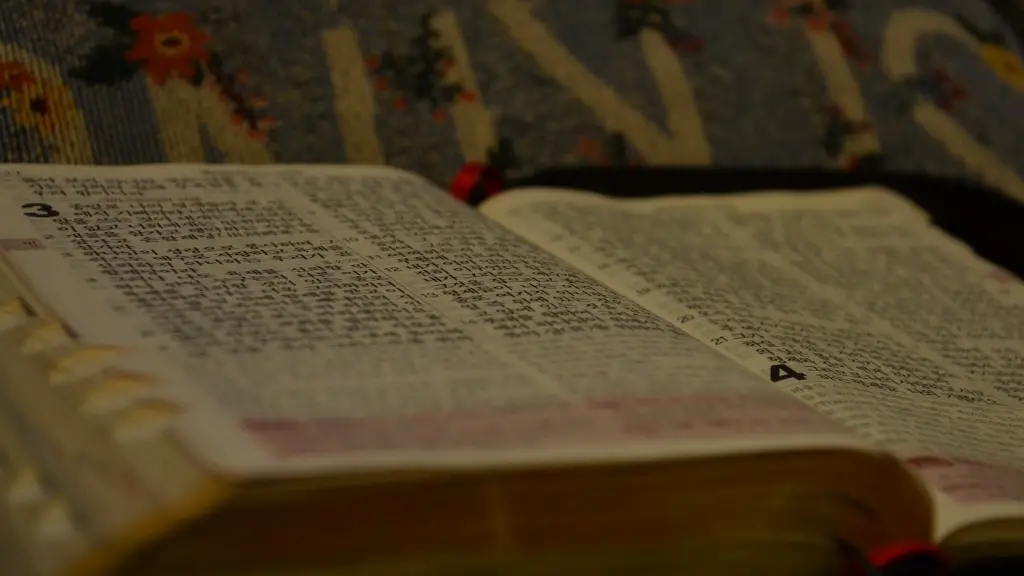What Is Baal In The Bible?
The Bible is full of references to deities and religious figures, but one of the more mysterious and powerful figures is Baal. According to the Bible, Baal was a Semitic god worshipped by both the ancient Israelites and the Canaanites, and he has become known as a powerful and fearsome deity. His cult has had a lasting impact on Jewish and Christian faith, inspiring myths and legends that have been handed down for millennia. To understand exactly what Baal was and what his role was in the Bible, it’s necessary to look at the history and mythology of ancient pagan religions.
The earliest references to Baal come from ancient Canaanite religion, which was practiced by the civilizations that existed in what is now Israel and Palestine. In Canaanite mythology, Baal was believed to be the son of El, the head of the Canaanite pantheon. He was the patron god of warriors and of fertility and was seen as an archetype of strength and leadership. Baal was believed to be in charge of the seasons, ruling over rain and the agricultural cycle. He was sometimes known as the “Lord of Heaven” and was considered to be the most powerful deity in the Canaanite pantheon.
The cult of Baal gradually evolved, and over time, he became associated with other deities. In later mythology, he was seen as the brother of the god Molech, and the two gods were often conflated with each other. Baal was also linked to the god El and the goddess Anat, who were both seen as his “parents.” As his cult grew in popularity, worshipers began to build temples and shrines dedicated to him, and he became a major figure in the pantheon of gods and goddesses worshipped by the ancient Israelites.
The Bible mentions Baal several times—primarily in the context of the Israelites’ stubbornness to follow God’s will. In the Old Testament, Baal is often portrayed in a negative light, as an idol whom the Israelites should not follow but instead reject. But Baal was also a powerful figure in early Christian thought: in the New Testament, he is mentioned as a symbol of the Antichrist. This connection provides an interesting parallel between ancient pagan worship and modern Christianity
The fact that Baal was an influential figure in two of the world’s major religions speaks to his lasting legacy and the power he held throughout antiquity. While his role in the Bible is complicated, he remains a figure of fascination in both Judaism and Christianity, providing a glimpse into the past and providing lessons about power and strength for today.
The Influence of Baal on Modern Religion
Although Baal no longer occupies as prominent a role in religious thought as he did in ancient times, his influence is still felt today. In modern Christianity, he is often seen as a symbol of false gods that should be rejected and as a type of Satan figure. In Jewish tradition, he is remembered as a powerful but flawed deity who was rejected by God. Although Baal is no longer actively worshipped, he is still remembered as a powerful and influential figure in religious history.
The cult of Baal that arose in the Middle East during the Iron Age had a lasting impact on modern religious practices. Through its symbolism and mythology, it has shaped the way in which many people think about religion and has provided a source of inspiration for religious stories, art, and literature. While no longer worshipped as he was in antiquity, Baal still occupies an important place in the minds of many people around the world.
Baal is also a powerful figure in popular culture. He has been featured prominently in films, books, and television, often as an otherworldly or demonic figure. This interpretation of Baal paints him as a dangerous and mysterious figure, often intent on sparking chaos and destruction. Such portrayals can help to explore the power and mystery of religion—particularly of the ancient pagan faith in which Baal once played a major role.
The Importance of Baal in Biblical Scholarship
Throughout its history, the Bible has been a source of fascination and study. The presence of Baal in both the Old and New Testament provides scholars with a unique opportunity to explore the history and development of religious thought. Scholars can explore the biblical accounts of Baal’s worship and can study the role he played in the ancient Middle Eastern societies that practiced his cult. They can also use the references in the Bible to inform their understanding of the development of religion throughout the Middle East, providing important insights into the history and development of Judaism and Christianity.
The study of Baal also provides insights into the complex web of religious influences and practices that took place in antiquity, providing clues about how ancient faiths interacted and influenced each other. By studying the various references to Baal in the Bible, scholars can gain a greater understanding of the role of religion in the ancient Middle East, and how that role has changed over time.
Although Baal may no longer occupy a major role in modern religious practices, his impact on religion and culture is still felt today. By studying the Bible, scholars can gain an insight into the ancient world and can understand the power and influence of figures such as Baal. His unique position in the pantheon of religious figures, as both a powerful god and an object of scorn, provides an intriguing window into religion and the power of faith.
Baal in Mythology and Folklore
The mythology and folklore surrounding Baal have been passed down for centuries, and have been shared across cultures, religions, and languages. In many ancient societies, Baal was seen as a powerful and feared figure, with stories of his wrath and terrible deeds in battle filling the folklore of the time. These stories were often combined with other pagan mythology to create a complex narrative which helped to explain the ways of the gods.
The mythology surrounding Baal is still prevalent in some cultures today. In some areas of the Middle East, stories of Baal are still present in the local culture and are used to explain the power of gods and the roles they play in human life. Understanding these myths and stories can provide important insights into regional cultural heritage and beliefs, and can offer a glimpse into the richness and diversity of languages and cultures.
Baal also continues to have an influence on modern art and literature, with many books and films utilizing his mythology in compelling and imaginative ways. These works often explore the nature of power and the role of religion in society and humanity, allowing modern audiences to gain an understanding of how ancient cultures viewed figures such as Baal.
Conclusion
Baal is a complex and fascinating figure, one who has had a lasting impact on religious thought and culture since his introduction into biblical literature. He is remembered today in both the Old and New Testament, providing a unique insight into faith, power, and the beliefs of ancient societies. His cult has been memorialized in art, literature, and folklore, and his presence in popular culture has continued to shape our understanding of religion and mythology.
Baal provides an important reminder of the role religion once occupied in ancient societies, and makes a case for the importance of studying the past in order to understand the power and influence of faith in the present. It is through exploring figures such as Baal that we can gain a greater understanding of the evolution of religious thought, and how the beliefs that were once held in such reverence still have the power to shape our beliefs and actions today.



